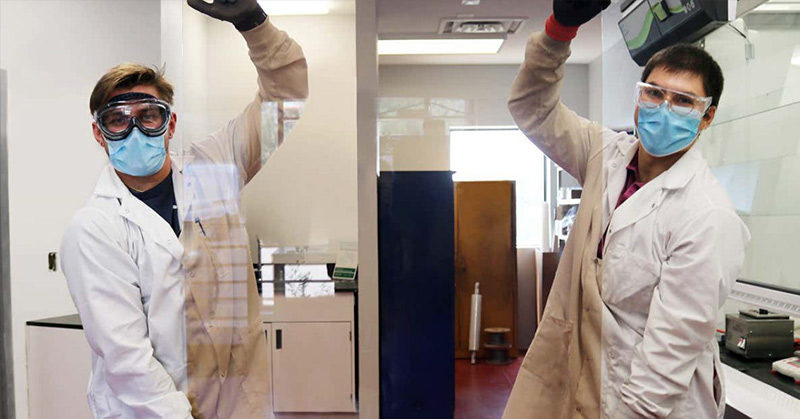Imagine if the sun shining in through the windows could be used to power your home or business. With these new transparent solar panels, that dream could become a reality.
Transparent Solar Panels for Windows
The latest technology to enter the world of solar power is photovoltaic (PV) glass, also known as transparent solar panels. (1) This technology can be used to create windows that generate power where windows already exists, like businesses, our homes, car windows & sunroofs, and even smartphones (1)
Researchers at Michigan State University were the first to create this type of clear solar panel in 2014, and now researchers elsewhere in the United States and in Europe have been able to create fully transparent solar glass. (1)
Read: This Adventure-Ready Tiny House Has a Mud Room and Fold-Down Deck
How They Work
The job of a solar panel is to absorb sunlight and convert that sunlight into power.
Until now, clear solar panels weren’t possible because the light passes right through the glass instead of being harnessed for energy production. (1)
This new technology can turn essentially any glass sheet or window into a PV cell. This cell selectively chooses a portion of the solar spectrum that the human eye can’t see, while allowing the rest of the light to pass through. It does this using a transparent luminescent solar concentrator (TLSC). (1)
The TLSC is made of organic salts that absorb specific invisible UV and infrared light wavelengths which are then made to glow as another invisible wavelength. That wavelength is then transferred to the edge of the window where thin PV solar strips convert it into energy. (1)
A New Breakthrough
This past August, Michigan University researchers set a new record for efficiency of color-neutral transparent solar cells. (2) Using an organic, carbon-based design, they achieved (2):
- 8.1% efficiency
- 43.3% transparency
The cells are similar to the grey tint of car windows or sunglasses, but instead, have a slightly green appearance to them. Previous transparent solar cells have only had a 2 – 3% efficiency, so this is a promising technology. (2) To put this into perspective, regular nontransparent solar cells have an efficiency between 15-20% (4). While transparent solar may not stack up when compared to standard solar technology, it’s improving.
“Windows, which are on the face of every building, are an ideal location for organic solar cells because they offer something silicon can’t, which is a combination of very high efficiency and very high visible transparency,” Engineering professor Stephen Forrest explained. (2)
The idea is essentially to use the coating that most building windows already have to help reduce brightness and heat inside the building to instead create energy. (2)
The Drive For Completely Clear Panels Continues
An advanced materials company UbiQD in New Mexico is currently working on transparent solar panels that look just like regular, clear glass. They are achieving this using a technology called quantum dots: Microscopic nanoparticles that manipulate light. (2) This is the same technology used in some of the newer smart TVs.
Quantum dots (nanoparticles) are so tiny that it would take 100,000 of them to cover even just your fingernail. They have extremely high efficiency and size-tunable photoluminescence, aka light emission, in several colors. (2)
Though the efficiency of these panels is only 3.6%, it is promising for the future. (3) UbiQD has already partnered with quantum dot manufacturer Nanosys to create panels for greenhouses that help plants get more from the sun. (3)
Read: Affordable Solar Homes Produce as Much Energy as They Use
Windows of the Future
It is estimated the United States has anywhere from five to seven billion square meters of glass surfaces. This means that transparent solar panels have the potential to meet up to 40% of the country’s energy demands. Combined them with rooftop solar panels and we have the potential to meet 100% of our current energy needs. (1)
While there is still a ways to go before these panels are implemented in buildings and structures across America , the prospect of achieving 100% green energy is certainly an exciting one.

